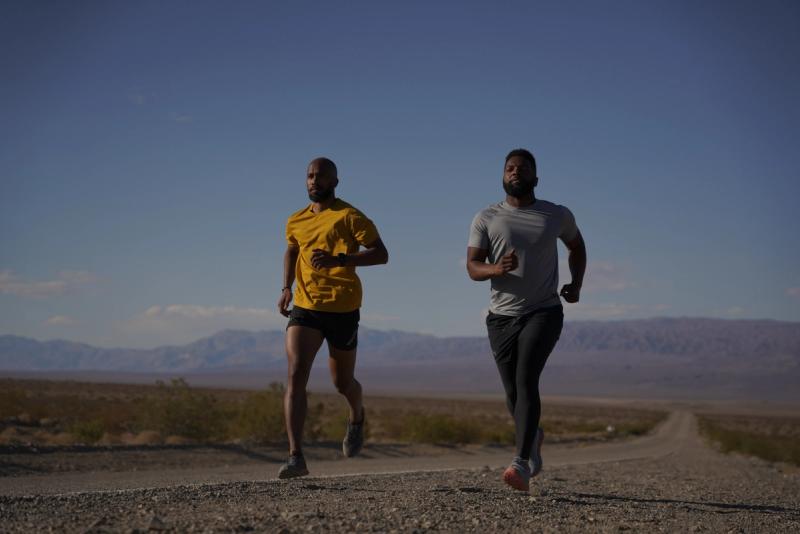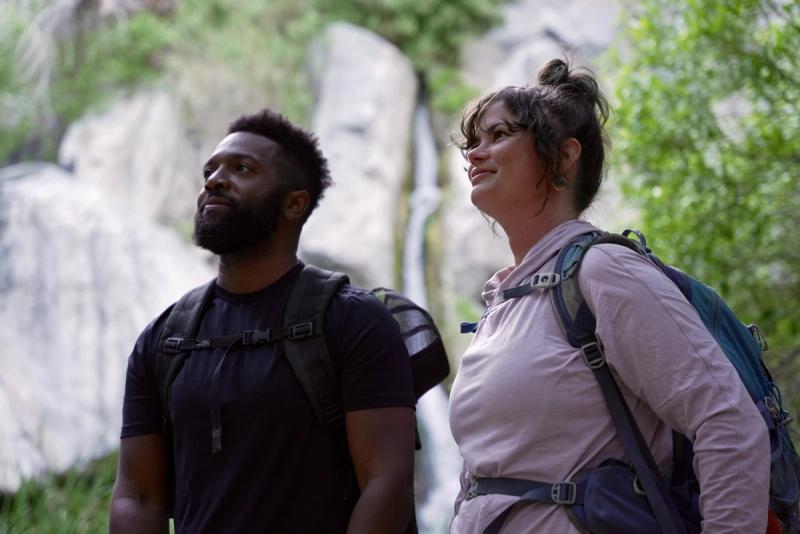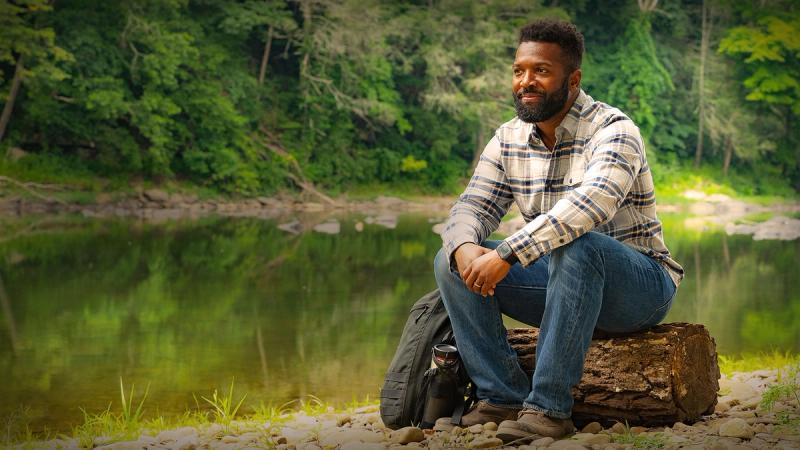
Baratunde Thurston Wants to Activate Your Inner Outdoor Adventurer
“We think we invent things and create things and define ourselves by ourselves, but that’s not the whole story,” Baratunde Thurston says on the trailer for America Outdoors, a six-part travel series that premiered last week on PBS. Thurston—a writer, comedian, and podcaster who has advised the Obama White House, worked as a producer on The Daily Show, and authored the best-selling memoir How To Be Black—has a knack for navigating nuanced conversations around race, culture, politics, and technology, framing these discussions in approachable ways. His curiosity and wit make him an engaging host as he explores the nation’s open terrain. On each episode, Thurston travels to a different region, investigating how our shared landscapes shape our lives.
“My goal with this show is to expose the value of connection to all people with nature,” says Thurston (who will be the guest on Ep. 70 of our Time Sensitive podcast, airing July 27). While not everyone wants to go hang gliding or track wild horses on a North Carolina beach (both of which Thurston does on the program), he continues, everyone deserves access to the outdoors—places that “retain the pulse of the natural world.”
Several of the people he spends time with on the series, and the reasons behind their zeal for nature, don’t fit the stereotypical outdoor enthusiast profile—and that’s precisely the point. Thurston visits wild rice harvesting farmers in Minnesota’s Arrowhead Region, field recordist Jared Blake in Virginia’s Shenandoah National Park, and coal miners-turned-beekeepers in Appalachia. At the latter, he goes whitewater rafting with Eric Thompson, a commercial raft leader who was paralyzed from the chest down in a car accident. Pointing to a steep staircase leading down to the waterfront, Thurston is struck by the lack of what’s already well-documented in urban contexts, and surmises, “Better design is better for all.”
The show also covers the climate crisis through an unexpected lens—specifically, from the first-hand perspectives of people who smell and breathe smoke-filled air every day, fishermen who can’t catch fish because there’s no water in key waterways, and firefighters whose job it is to protect homes in the midst of seemingly ceaseless wildfires. Thurston suggests that, in the effort to find solutions as the planet’s temperatures continue to rise, nature can be a unifying force. He spotlights collaborative efforts—including Los Angeles residents working together to restore a river, or seasoned ranchers who have decided to share the Idaho wilderness with newly resettled refugees—hoping to, as he puts it, “explain who we are, and to conjure up a better version of our collective selves.” In other segments, Thurston meets people such as wildlife photographer and filmmaker Dudley Edmondson, who’s passionate about getting people of color outdoors, as well as ultra marathoner Mosi Smith and hiker and writer Shawnté Salabert.
At one point in the series, a landscape Thurston encounters hits home. At the Great Dismal Swamp—a region, now a National Wildlife Refuge, in northeastern North Carolina and southeastern Virginia that acted as safe haven for people who had fled enslavement and was one of the only known water-based stops on Underground Railroad—he surveys the sacred grounds with an ancestor of a man who used to work on it. Crying as he stands alone on an island in the water, he feels “sadness, gratitude, and emotionally overwhelmed,” wondering if his own ancestors passed through the site. Thurston says he included the moment to encourage others to seek out natural environments that move them. By contrast, he continues, technology promises connection, but “with a different, more shallow flavor.” He wants America Outdoors to help people take pride in the places they come from, and to recognize why they are worth protecting. We don’t need virtual reality to connect us, provide an escape, or tell us who we are, Thurston suggests. “The metaverse we already have access to is,” he says, “just outside.”


